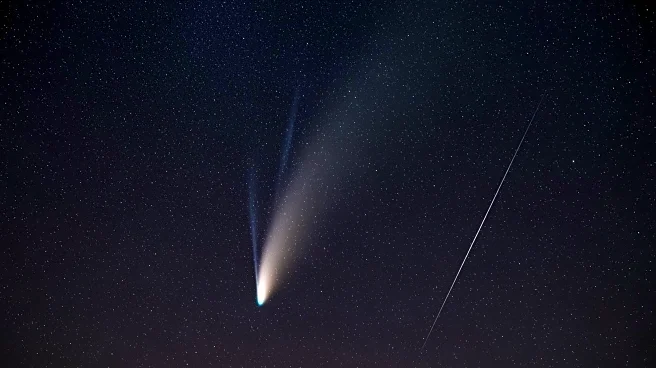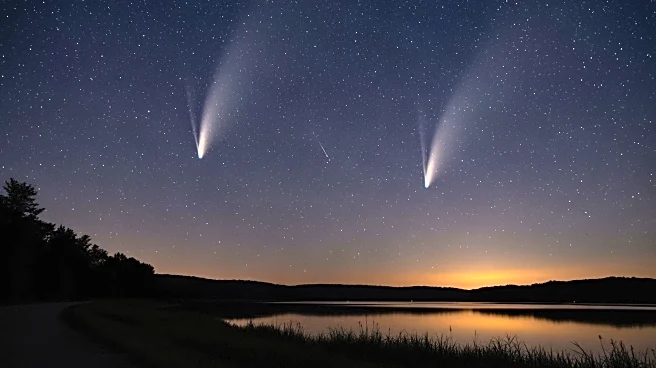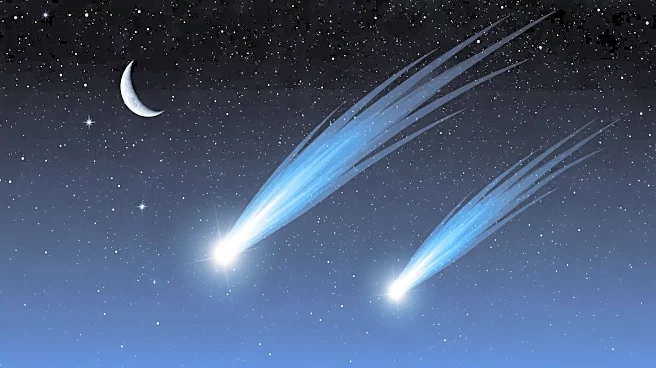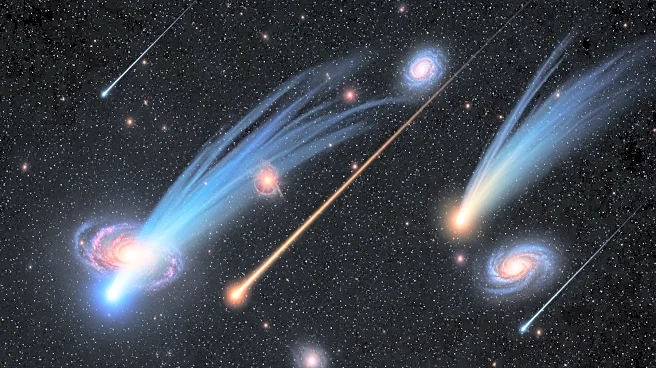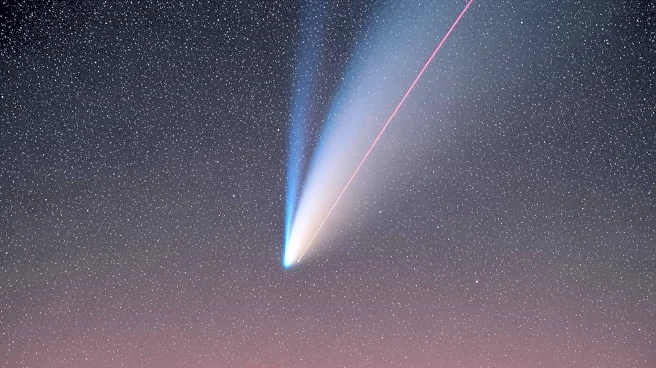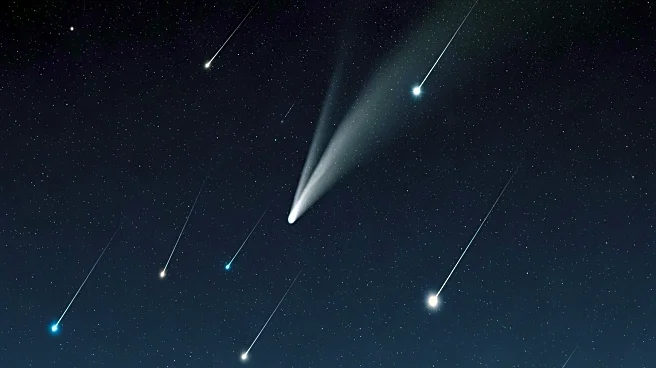What's Happening?
Comet Lemmon, newly discovered in January 2025, is visible in the night sky over Alaska, providing a rare celestial event for stargazers. The comet, initially mistaken for an asteroid, will make its closest
approach to Earth on October 21, 2025, at approximately 55 million miles away. Known for its long orbital period, Comet Lemmon last visited the inner solar system over 1,300 years ago. Viewing opportunities are best with binoculars, as the comet is visible low on the northwest horizon after sunset.
Why It's Important?
The visibility of Comet Lemmon offers a unique opportunity for public engagement with astronomy, potentially inspiring interest in science and education. For Alaskan residents, the event provides a chance to experience a cosmic spectacle that occurs infrequently. The comet's approach also underscores the importance of astronomical research and observation, contributing to scientific understanding of cometary behavior and composition. Such events can foster community interest in space exploration and the natural world.
What's Next?
Stargazers can continue to observe Comet Lemmon through the end of October, with viewing opportunities diminishing after this week. As the comet moves towards the sun, astronomers will analyze data collected during its approach to enhance knowledge of comet dynamics and interactions with solar winds. Public interest may lead to increased participation in astronomy-related activities and events, fostering community engagement with science.
Beyond the Headlines
The appearance of Comet Lemmon may prompt discussions on the role of space exploration in scientific advancement and the allocation of resources for astronomical research. Ethical considerations regarding the prioritization of space missions versus other societal needs could arise, as the public weighs the benefits of scientific discovery against other priorities.
